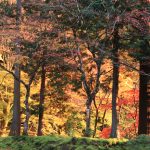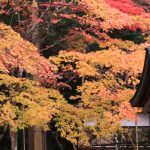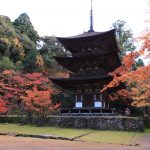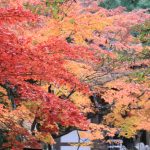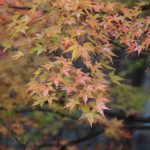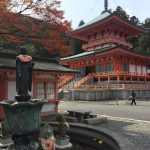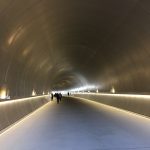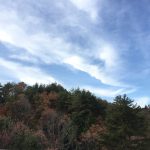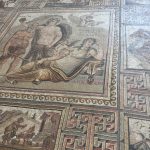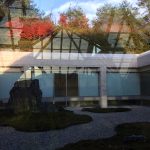Moved to Biwako hotel in Otsu for 2 nights. Picked up a car to visit koyo around Biwako for the first time. Very heavy traffic heading north on the western rim where there is no expressway. Arrived at a spot in Omi-Takashima where supposedly there should be a boulevard of fiery red Meta-sequoia trees, but it turned out to be in pale green/yellow and rain started to pour abruptly. Drove eastward to Keisokuji but decided to skip it after 10min as there was a long queue of cars heading towards it on a narrow road.
Saimyo-ji (西明寺)
Finally, we arrived at Saimyoji in eastern Biwako in late afternoon. There were few visitors around and koyo was brilliant in the setting sun, which found its way through rain clouds. Visited in about 30min before closure but it was worthwhile.
Enryaku-ji (延暦寺)
On next morning drove uphill to Hieizan to visit World Heritage Enryakuji. We visited the Todo (Eastern Hall) area only. Though the Chuo-do (根本中堂) has been under major renovation, we visited it and it was worthwhile. Monks were conducting normal rituals inside and two head monks were speaking to visiting locals. Koyo was still gorgeous which was beyond our expectation in late November up on Hieizan.
Biwako as viewed from Hieizan
Miho museum
Drove eastward after lunch to visit Miho museum, which was nestled inside mountains. After parking our car, we had to walk through a long tunnel to reach the museum entrance – though free trolley was available, the queue was long.
The architecture was designed by I.M. Pei to create a modern version of Shangri-la. We were surprised by its huge private collection of artifacts from ancient Mesopotamia, Egypt, Roman Empire, China etc up to the modern era. We spent about 2 hours and had to return as traffic was heavy.
===> Part 6 ===>


